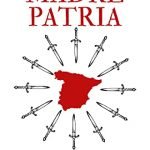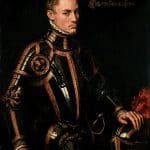
Contents
Hawkins: English Corsair, knighted
Hawkins began as a slave trader buying slaves in Africa and taking them to America. Financed by the Queen and rewarded, he ended up as a famous English privateer, raiding the rich Spanish colonies in America.
John Hawkins a famous English privateer
(Plymouth 1532-1595 Puerto Rico)
Hawkins habitually followed the same route, buying blacks in Africa and selling them in America. He initiated and participated with his nephew Francis Drake, in his activities as a privateer and slave trader.
Hawkins slave trader and privateer
At that time slavery was legal in most countries. More than a slave trader in England, he was defined as a Slave Trader. He founded a company in London in 1555 and began his activities as a slave trader.
With the lucrative business of selling slaves he made his fortune. The triangle of wealth of this English privateer and pirate was the route England to Africa, Africa to America, America to England.
In Africa he bought slaves from Arab traffickers or tribal chiefs who sold him the captured prisoners. From there he would take them on his ship to America and sell them to the Spanish or Portuguese. If they were not willing to buy them, he threatened to destroy the colony. At that time the Spanish colonies were not protected because practically only the Spanish and Portuguese had adequate ships to reach them.
Travel to Africa
Departing from the island of Great Britain, they headed to Africa to trade slaves in exchange for European trinkets. What for Europeans at that time were rather unimportant trinkets, were highly valued goods in Africa. Products such as mirrors, bracelets or necklaces, hats, clothes and even utensils such as scissors, axes or hammers, etc,
He started as a slave trader
From England he traveled to Africa, bought slaves and took them to the new colonies in America. A great business that he completed by attacking the Spaniards.
He ended up as a privateer in the service of Queen Elizabeth I of England.
Merchant and slave trader
It was the beginning of an important era for privateers.
Belonging to a family of shipowners and sailors, he dedicated himself to life at sea. He discovered how to get rich by trafficking especially with slaves that he collected in Africa and sold in America. But his social ascent took place as a privateer in the service of the Queen of England. His nephew Francis Drake accompanied him from a very young age and followed in his footsteps.
Funded by the City of London
Obtain ships and supplies
Seeing the possibilities offered by a surprise attack on the Spanish Empire in America, he informs the Queen. She participates in the adventure and through her contacts in the powerful people of the City of London, she gets ships and sailors to finance it.
The Battle of Veracruz
With the help of the City and the Queen, he organized an expedition of 6 ships.
He sails along the usual route to Africa. After loading up with slaves, it heads for South America. They prowled through the territory carrying out raids. Although their objective was Brazil, a great storm takes them to the Caribbean and they end up in Veracruz, the entrance to Mexico.
In San Juan de Ulua, the small population allows him to enter, mistaking him for a Spanish fleet they were expecting. Amidst cheers he arrives at the port, until the unsuspecting colonists realize what has happened. But it is too late, they are already inside. They set up cannons in front of the town and threaten to destroy it if they do not buy the slaves.
While they are in negotiations, the Spanish fleet arrives with the new Viceroy. During the night they attack the English ships, which are set on fire. John Hawkins manages to flee, and sees that Francis Drake’s ship is no longer in port.
In this adventure the English lost 4 ships, and several hundred sailors. The Spanish recovered all the treasures and merchandise stolen during almost 1 year of raids. The Englishmen who did not die in the battle and fled, were later captured and executed. They managed to return to England after great hardships. The expedition arrived with great losses and without any of the booty obtained.
Brilliant career
Parliamentarian and Treasurer of the Royal Navy
After the defeat of Veracruz, he proclaimed his hatred for Spain. He increased his activity as a privateer, rewarded by Queen Isabella, throughout his reign. He soon made profits from his voyages, profiting from slavery and his activity as a privateer. The success of his activities led him to be rewarded with honors and political posts.
Dedicated to the design of fast boats
Fast and maneuverable boats
A lifetime on the run from the Spanish inclined him to fast ships. So he pushed for new ship constructions to take speed into account.
From Brazil to New Orleans
Venezuela, Haiti, Cuba, Jamaica
He sold slaves throughout the Caribbean Sea and the American coast. He distributed his cargo of slaves along the entire Atlantic coast, including Brazil.
Appointed Rear Admiral
Your ship the Victory
Participate with this boat that already had the new design. A low, fast, more manageable boat. He collaborates in the design of the new English ships. Boats that he wanted to use to be able to approach and flee easily.
For this reason, speed was more important than capacity. Contrary to the Spanish, who wanted to have large and robust ships, such as the Galleons, with great storage capacity, and that could withstand the crossings across the Atlantic.
Reward from Queen Elizabeth I
Awarded their achievements
Since the beginning with his company as a slave trader and obtaining a privateer’s patent, he obtained great benefits. He was knighted by Queen Elizabeth of England.
His participation in the fight against the Spanish Armada was recognized and rewarded. Queen Elizabeth I of England, very happy with the failure of the Spanish expedition, rewarded him for his help and great experience.
The return and its final failure
His last expedition, a disaster
A large expedition of 31 ships, including 6 Royal Ships, with 1,500 sailors and 3,000 soldiers.
In 1594, after convincing the Queen of England, a new expedition was organized in England to plunder the Spanish possessions in America. A well financed and armed expedition. With such forces they believed they would succeed because of their great superiority.
It is directed by Francis Drake and John Hawkins, at the age of 62 years, does not resist to participate in this new adventure, remembering the previous successes. But he is already an honorary ruler, the real command will be Drake’s.
But getting water and food on a long journey is complicated. Based on the opinion of General Baskerville head of the soldiers, participating in the expedition decided to make a stopover. Baskerville assured them that in a few hours he would be able and would occupy the capital of the Canary Islands. Convinced, they decided to attack to obtain supplies. The operation was a failure. They did not manage to disembark, losing men and suffering damage to the ships from cannon fire from the coast.
In their desperate attempt to get water, on another of the islands, they were attacked by a Spanish patrol that took 2 prisoners. These revealed the English plan to attack the Caribbean. In response, a Spanish ship was sent to warn of the early arrival of the English fleet in the Caribbean.
But during these years, things have changed in America. Their former successes were mainly due to the fact that the Spanish populations of the Spanish Viceroyalties were previously unprotected and widely dispersed. Moreover, at that time, because of the enormous distance between Europe and America, visitors by sea were not to be expected. Spain had established colonies in the Caribbean and in enormous extensions of America and took measures.
After suffering attacks by English and French pirates and corsairs, Spain proceeded to regroup its populations in the Viceroyalties of America and to protect them.
But for Hawkins and Drake the worst was not their failure in the Canary Islands, it was what awaited them in America. The Spaniards were already alert and prepared and increased their defenses. After the failure of these islands, he decided to continue with the expedition and attack the most unprotected Spanish populations such as those in the Caribbean, where he had obtained such good booty years before. He headed for the island of Puerto Rico, in the Caribbean Sea.
Dies in Puerto Rico
He participated with Drake in the attack on Puerto Rico in 1595. This will be his last attack. He does not get the idea, but things have changed in 20 years. The Spanish have better defenses in these places. Communications have improved. Ships report everything that happens, in all the ports. They already know of the existence of the English fleet heading towards them and of the attack on the Canaries. The Spanish Governor Tello is already waiting for them.
He made the mistake of not recognizing the area well. He sent his ships to anchor near the coast, without observing that he was within range of the Spanish cannons of a group of batteries, in a camouflaged area and ahead of the forts, which the Spaniards had installed for better defense. The Spanish Governor allowed them to anchor without problems. But when their ships were immobilized, they were incessantly cannonaded from these coastal batteries that had them within range.
Hawkins also receives a hail of fire from the forward batteries of the Morro and San Cristobal fortresses. The English ships suffer the Spanish fire and have to cut their moorings and move away. During this cannon fire, a cannonball hits the officers’ quarters. Several are killed when the chamber and part of the deck are destroyed. Hawkins is also mortally wounded. Shortly thereafter he would die and his body would be thrown into the sea.
Drake continued with the mission but it was a real failure, as he was defeated in Puerto Rico and all the operations he carried out. Francis Drake also lost his life. General Baskerville, leader of the soldiers, had to take command of the expedition. In the presence of the Spanish fleet and to avoid being hit, he had to throw his cannons overboard to gain speed.
Only a few ships of the expedition managed to return to England, in distressing conditions.
Related


